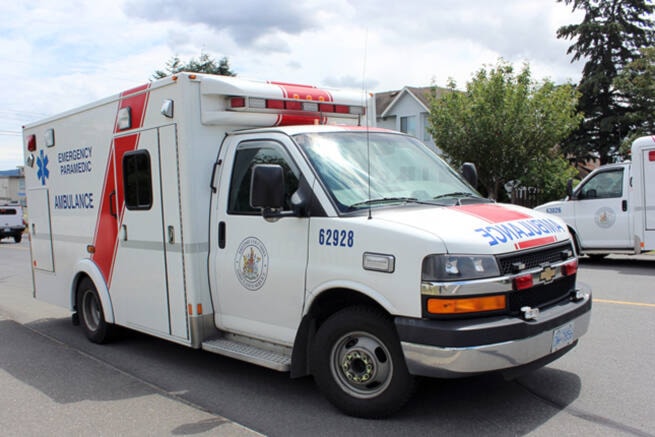The provincial ambulance service hopes a planned training program in Prince Rupert will help fill vacant positions across the region and beyond.
Following a rapid expansion of positions in locations in the northwest and the rest of the province last year, BC Emergency Health Services (BCEHS), the provincial agency responsible for paramedics, has had trouble filling spots not only in larger places but also in the more rural and remote locations.
Its Kitwanga ambulance station, for example, has had no resident paramedics since last fall and service is being provided by rotating crews in and out from Terrace and Hazelton.
That station was one of many in smaller rural and remote communities where the ambulance service created full-time positions, with benefits, in hopes of attracting and keeping paramedics.
From a station where paramedics were mostly on-call, the ambulance service created four positions, including a community paramedic who would also double as station chief.
But now the ambulance service hopes a program to be offered through the Hecate Strait Employment Development Society in Prince Rupert will produce a core of emergency medical responders able to spread throughout the region.
“Participants who successfully receive their emergency medical responders and class 4 licences and meet other requirements, including a successful interview, criminal record check and fitness test, will be hired in paramedic roles by BCEHS,” the service indicates.
“Participants do not need to need to have existing medical training before beginning an emergency medical responder course.”
Those taking the course will also have its costs covered.
First Nations villages and locations, where the ambulance service has had challenge in staffing positions, rank high on the list of potential employee recruitment places.
Those completing the Prince Rupert training program will come out licensed as emergency medical responders, administering basic life-saving emergency medical care.
Emergency medical responders are the first of six tiers within the ambulance service, each one adding to a person’s skills.
One up from that starting classification are primary care paramedics who make up the majority of the service’s paramedics and who handle the majority of the 911 calls.
Prince Rupert is not the only location in the northwest where an effort is underway to train local residents — a new emergency medical service that’s part of the Nisga’a Valley Health Authority in the Nass Valley is also in the market for emergency medical responders.
It’s running a training program through the Justice Institute of B.C. and the provincial ambulance service says it is also eyeing its graduates as potential employees.
Troy Clifford, the president of the Canadian Union of Public Employees (CUPE) Local 873, which represents the ambulance service’s unionized paramedics and dispatchers, welcomes efforts underway to train northern B.C. residents.
“By training people in the north, the idea is they’ll stay in the north, continuing those connections with their own communities,” he said.
Clifford gives credit to the provincial government for staffing up ambulance stations in more rural and remote locations by creating full-time positions to replace part time or on call ones so as to provide more incentive for people to remain in the area and to consider paramedic careers.
“It’s always been a challenge, thinking of places such as Haida Gwaii,” said Clifford in recounting locations where it has been difficult to recruit and retain.
But it will take a huge effort to fill vacant positions within the provincial ambulance service regardless of where the vacancies are.
Clifford’s CUPE local represents about 4,500 people, 500 of whom are dispatchers, and he estimates the service needs 500 new paramedics a year to keep up with attrition and retirements, yet alone finding people for the new positions.
“And our call volume is increasing at six per cent a year,” Clifford said. “Without hesitation, I’d say 500 paramedics.”
He also notes the ambulance service faces competition from the private sector where large-scale projects require paramedics of their own.
“There are so many other opportunities out there,” Clifford added.
Provincial ambulance service recruiters are also expanding their search for trained paramedics by looking across the country, placing ads on a variety of social media sites and redoing its website.
“Paramedics who are licensed in other Canadian provinces can apply to the Emergency Medical Assistants Licensing Board to receive the equivalent licence in B.C.,” the service said.
READ MORE: Trickle-down effect: Never-ending opioid crisis driving B.C. paramedics to exhaustion
